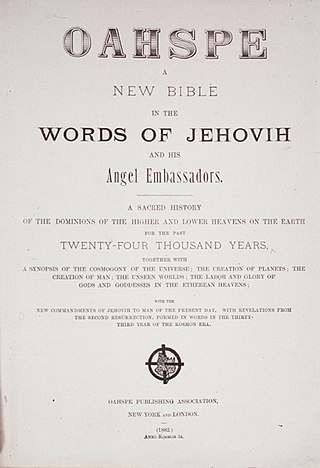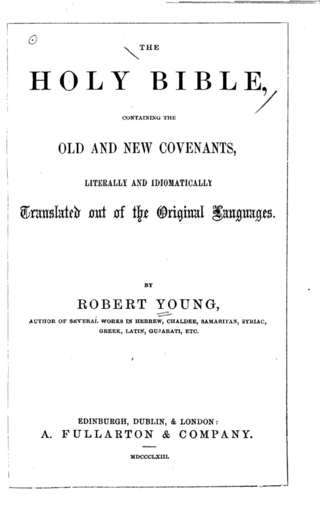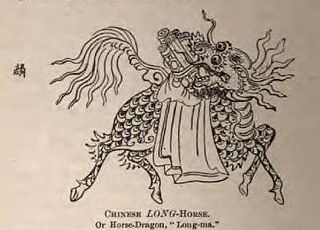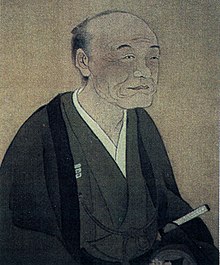References in English
De Bary, ed. Sources of Japanese Tradition, Vol. 1, 1958, pp. 489–496.
De Bary et al., eds. Sources of Japanese Tradition, Vol. 2, 2005, pp. 424–431.
Heisig, Kasulis and Mraldo, eds. Japanese Philosophy: a Sourcebook, Honolulu, 2011, pp. 441–6.
Mercer, Rosemary, Deep Words, Leiden, 1991.
Mercer, Rosemary: Picturing the Universe, in Philosophy East and West, Vol 48, 3, 1998.
Mercer, Rosemary: Miura Baien Reader, eBook, 2016.
English translations
Genkiron, 1753: in Deep Words.
Letter to Asada Gōryū, 1763 in Mercer: Before Our Very Eyes, PhD thesis, 1994, and Miura Baien Reader.
Kagen, (Origin of Price), 1773: in Miura Baien Reader.
Gengo Honsō,(Core text) 1775: in Deep Words and Miura Baien Reader.
Gengo Reiji (Remarks) 1775: in Before Our Very Eyes and Miura Baien Reader.
Letter to Yumisaki Yoshitada, 1776: in Before Our Very Eyes and Miura Baien Reader.
Letter to Kō Takaoki, 1776: in Before Our Very Eyes and Miura Baien Reader.
Reply to Taga Bokkei, 1777: in Deep Words.
Samidaresho, "Musings in the Summer Rain", 1784: in Hurvitz, Leon, Monumenta Nipponica, 8 and 9.
Letter to Asada Gōryū, 1785: in Before Our Very Eyes and Miura Baien Reader.
Key sources in Japanese
Iwami Teruhiko (岩見輝彦著): Miura Baien no Seishū no Gaku, Kyūkoshoin, 1990.
Ogawa Haruhisa: Miura Baien no Sekai, Kodensha, 1989.
Shimada Kenji and Taguchi Masaharu (島田虔次, 田口正治): "Miura Baien", Nihon Shisō Taikei 41, Iwanami 1982. (Complete Gengo text, both in the original kanbun and a wabun version).
Takahashi Masayasu (高橋正和): Miura Baien no Shisō, Perikansha, 1981.
Yanagisawa Minami (柳沢南), Miura Baien to Nihon Bunka Yanagisawa, Maebashi, 2012
Illustrative quotations
1. From Reiji, “Remarks” 例旨(also translated as “Preface”, or “Exemplification”), Section 8:
“When I use the word “ki”, there are the kinds ki and object, ki and body, ki and shape, ki and matter, ki and image, heaven and ki, mind and ki, ki and colour, and so on. When I use “spirit” there are the kinds heaven and spirit, essence and spirit, spirit and object, spirit and soul, phantom and spirit, spirit and man, sagacity and spirit, and so on. When I use “heaven”, there are the kinds heaven and earth, heaven and spirit, heaven and object, heaven and man, heaven and destiny, and so on. Words are names, subjects are realities. Subjects are heaven, words are man.”
A jōri term changes its meaning precisely according to the term it is paired with. One key jōri term is ki ( 気), to which Baien assigns unique meanings. 2. From Honsō, “Core text”:
“As an illustration, take a piece of brocade. The raw side consists of warp threads and woof threads, scarlet threads and green threads, but on the finished side are flowers, grass, and fabulous birds. The spirit of these comes from the imagination of a clever woman. And so one piece of brocade has a nature that is endowed with two bodies, the raw side and the finished side, a clever seamstress brings spirit to it, objects are fixed to it by silk threads, and an incomprehensible human art attains the mystery of heaven's creation....”
In the first pages of Honsō the metaphor of the robe illustrates his view of the universe. Phoenixes and dragons may be mythical creatures but here they represent objects such as trees, stars and everyday things. It is as though one side of the universe consists of such things, and this is the real world. But there is another side of the universe that is quite different, for some it may consist of constantly moving atomic particles, for example, and this side too is the real world.
The fact that the two sides are quite different, but inseparable, provides a good example of his terminology. In the two jōri pairs “whole and side” and “whole and part”, “whole” changes meaning according to whether or not it is paired with “side” or with “part”. “Side” here corresponds to the right side or the wrong side of a fabric, two sides of a whole, one thing. “Part” is a piece of the whole, as the sleeve of a garment is. (The physicist Yukawa Hideki has commented on the applicability of Baien's jōri system to Böhr's theory of the complementarity of the wave and particle theories of light. [Yukawa Hideki: Baien kenkyū, 1, 1970]).
3. From Letter to Yunisaki Yoshitada: (Baien writes the characters for yin and yang without the left hand radical.)
“The items "yin" and "yang" are first seen in I Ching. However, their sense there was sometimes the Way, sometimes the Forms, and sometimes the Lines. Although I Ching is an account of divination, to look at heaven and earth through that text is like scratching an itching foot without taking off one's sandal. ”
Baien's dualism is his own: it is neither the Chinese yin and yang nor European dialectic. Although Baien was well versed in the corpus of Chinese and Japanese scholarship he breaks with tradition. He is not easily described as a member of any school of thought. His individuality makes heavy demands on readers of Gengo, Eastern and Western alike. It might be said that this individuality makes the thought of Miura Baien universally accessible. 4. From Letter to Asada Gōryū , 1763:
“At the beginning of this spring, I reread several of the passages you recommended. I spent several days unrolling volumes. At last I understood your meaning and became overjoyed. . . .
Hundreds of scholars have studied calendrical science, but none has reached your level. How fortunate I am to be living here at the same time, and to hear your words.
With an instrument you made yourself you discovered black spots moving on the surface of the sun. You discovered the intricate details of the jagged surface of the moon. You learned about the phases of Venus, the movements of the satellites of Saturn and Jupiter, and the orbits of the planets around the sun. You have observed lunar eclipses . . . . Although I cannot understand all your methods you have given me a great notebook for the study of jōri.”
Asada Gōryū was the son of Baien's teacher in the village of Kitsuki. Asada independently discovered Kepler's 3rd law of planetary motion when Japan was closed to the West apart from the Dutch visitors to Nagasaki. Asada studied at the Kaitokudō, a merchant academy in Osaka. [See Najita Tetsuo: Visions of Virtue in Tokugawa Japan.] Information about European texts and ideas was could be brought overland from Nagasaki to Kitsuki and by sea to the Kaitokudō, stimulating scientific study there. Baien himself strove to develop a philosophical unifying theory of everything in the universe rather than a specific science. 5. From Reiji 例旨, Section 3:
“Oh, I may draw a flower with consummate skill, but it will not bear seeds. I may carve a faithful copy of a bird, but it will never be as beautiful as the original. The craft of heaven borrows nothing from man, and the craft of man can never imitate heaven.”
Baien drew numerous diagrams illustrating parts of his theory but acknowledged that diagrams alone were inadequate to represent the vast and complex jōri system. 6. From Reiji 例旨, Section 2
“Thus, those who desire to read this book can read freely, upstream against the current, following the current downwards, taking something from the left, something from the right, pulling this from the centre, or that from the margin. It is just as one can turn a wheel from any point the hand touches it. ”
After the introductory "Remarks", Gengo is ordered by the two chapters of Honsō ("Core Text"), followed by three volumes, each of which is divided into two sections, the Volume of Heaven, the Volume of Earth, and the Volume of the Small. These texts elaborate and develop the themes of Honsō. 7. From “Reply to Taga Bokkei”
“Because I do not have an accurate grasp of heaven and earth, my habits of thought must have led me to numerous errors. Therefore in my three books with their many thousands of words, those words that agree with heaven and earth should be attributed to heaven and earth, and those that do not agree with heaven and earth should be imputed to me. One must not trust my words blindly, but verify them by heaven and earth, and accept only those things that heaven and earth show to be correct.”
The Book of Proverbs is a book in the third section of the Hebrew Bible and a book of the Christian Old Testament. When translated into Greek and Latin, the title took on different forms: in the Greek Septuagint (LXX) it became Παροιμίαι ; in the Latin Vulgate the title was Proverbia, from which the English name is derived.
Kukishin-ryū (九鬼神流), originally "Nine Gods Divine School" is a Japanese martial art allegedly founded in the 14th century CE by Kuki Yakushimaru Ryūshin. It is a sōgō bujutsu, meaning that it teaches several different weapons/arts such as taijutsu, bōjutsu, naginatajutsu, kenpō, hanbōjutsu, sōjutsu and heiho. Kukishin-ryū and its founder are listed in the Bugei Ryūha Daijiten or "The Encyclopedia of Martial Art Schools", a record of modern (gendai) and old lineage (koryū) Japanese martial schools.

Ōita Prefecture is a prefecture of Japan located on the island of Kyūshū. Ōita Prefecture has a population of 1,136,245 and has a geographic area of 6,340 km2. Ōita Prefecture borders Fukuoka Prefecture to the northwest, Kumamoto Prefecture to the southwest, and Miyazaki Prefecture to the south.

Biblical cosmology is the account of the universe and its laws in the Bible. The Bible was formed over many centuries, involving many authors, and reflects shifting patterns of religious belief; consequently, its cosmology is not always consistent. Nor do the biblical texts necessarily represent the beliefs of all Jews or Christians at the time they were put into writing: the majority of the texts making up the Hebrew Bible or Old Testament in particular represent the beliefs of only a small segment of the ancient Israelite community, the members of a late Judean religious tradition centered in Jerusalem and devoted to the exclusive worship of Yahweh.

Oahspe: A New Bible is a book published in 1882, purporting to contain "new revelations" from "...the Embassadors of the angel hosts of heaven prepared and revealed unto man in the name of Jehovih..." It was produced by an American dentist, John Ballou Newbrough (1828–1891), who reported it to have been written by automatic writing, making it one of a number of 19th-century spiritualist works attributed to that practice. The text defines adherents of the disciplines expounded in Oahspe as "Faithists".

Tiān (天) is one of the oldest Chinese terms for heaven and a key concept in Chinese mythology, philosophy, and religion. During the Shang dynasty, the Chinese referred to their supreme god as Shàngdì or Dì. During the following Zhou dynasty, Tiān became synonymous with this figure. Before the 20th century, worship of Tiān was an orthodox state religion of China.

Young's Literal Translation (YLT) is a translation of the Bible into English, published in 1862. The translation was made by Robert Young, compiler of Young's Analytical Concordance to the Bible and Concise Critical Comments on the New Testament. Young used the Textus Receptus (TR) and the Masoretic Text (MT) as the basis for his translation. He wrote in the preface to the first edition, "It has been no part of the Translator's plan to attempt to form a New Hebrew or Greek Text—he has therefore somewhat rigidly adhered to the received ones." Young produced a "Revised Version" of his translation in 1887, but he stuck with the Received Text. He wrote in the preface to the Revised Edition, "The Greek Text followed is that generally recognized as the 'Received Text,' not because it is thought perfect, but because the department of Translation is quite distinct from that of textual criticism, and few are qualified for both. If the original text be altered by a translator, the reader is left in uncertainty whether the translation given is to be considered as that of the old or of the new reading." A new Revised Edition was released ten years after Robert Young's death on October 14, 1888. The 1898 version was based on the TR, easily confirmed by the word "bathe" in Revelation 1:5 and the word "again" in Revelation 20:5. The "Publishers' Note to the Third Edition" explains, "The work has been subjected to a fresh revision, making no alteration on the principles on which the Translation proceeds, but endeavouring to make it as nearly perfect in point of accuracy on its present lines as possible."

A Watcher is a type of biblical angel. The word occurs in both plural and singular forms in the Book of Daniel, where reference is made to the holiness of the beings. The apocryphal Books of Enoch refer to both good and bad Watchers, with a primary focus on the rebellious ones.
The Genesis creation narrative is the creation myth of both Judaism and Christianity. The narrative is made up of two stories, roughly equivalent to the first two chapters of the Book of Genesis. In the first, Elohim creates the heavens and the Earth in six days, then rests on, blesses, and sanctifies the seventh. In the second story God creates Adam, the first man, from dust and places him in the Garden of Eden. There he is given dominion over the animals. Eve, the first woman, is created from Adam's rib as his companion.

The Hidden Words is a book written in Baghdad around 1858 by Baháʼu'lláh, the founder of the Baháʼí Faith, while he walked along the banks of the Tigris river during his exile there. The work is written partly in Arabic and partly in Persian.

Jeung San Do (Korean: 증산도), occasionally called Jeungsanism, meaning "The Dao/Tao of Jeung-san", although this term is better reserved for a larger family of movements, is a new religious movement founded in South Korea in 1974. It is one of more than 100 Korean religious movements that recognize Gang Il-sun, an early 20th century religious leader, as the incarnation and personification of Sangjenim and performed a "reordering of the universe" through his mission and rituals. The religion is characterised by a universal message, millenarianism, and a method of healing meditation.

Ōkuninushi, also known as Ō(a)namuchi or Ō(a)namochi among other variants, is a kami in Japanese mythology. He is one of the central deities in the cycle of myths recorded in the Kojiki and the Nihon Shoki alongside the sun goddess Amaterasu and her brother, the wild god Susanoo, who is reckoned to be either Ōkuninushi's distant ancestor or father. In these texts, Ōkuninushi (Ōnamuchi) is portrayed as the head of the kunitsukami, the gods of the earth, and the original ruler of the terrestrial world, named Ashihara no Nakatsukuni. When the heavenly deities (amatsukami) headed by Amaterasu demanded that he relinquish his rule over the land, Ōkuninushi agreed to their terms and withdrew into the unseen world, which was given to him to rule over in exchange. Amaterasu's grandson Ninigi then came down from heaven to govern Ashihara no Nakatsukuni and eventually became the ancestor of the Japanese imperial line.

Tengrism is an ethnic Turkic, Yeniseian, Mongolic religion originating in the Eurasian steppes, based on shamanism and animism. It generally involves the titular sky god Tengri, who is not considered a deity in the usual sense but a personification of the universe. According to some scholars, adherents of Tengrism view the purpose of life to be in harmony with the universe.
Shen is a Chinese word with senses of spirit, god, or deity. The Japanese equivalent is shin, as in Shinto. This single Chinese term expresses a range of similar, yet differing, meanings.
Zhenren is a Chinese term that first appeared in the Zhuangzi meaning "Taoist spiritual master" in those writings. Religious Taoism mythologized zhenren, having them occupy various places in the celestial hierarchy sometimes synonymous with xian, while Chinese Buddhism used it to translate Arahant "Enlightened One".
The Qingjing Jing is an anonymous Tang Dynasty Taoist classic that combines philosophical themes from the Tao Te Ching with the logical presentation of Buddhist texts and a literary form reminiscent of the Heart Sutra. It instructs students of the Tao to practice the elimination of desire in order to cultivate spiritual purity and stillness.

The longma is a fabled winged horse with dragon scales in Chinese mythology. Seeing a longma was an omen of a legendary sage-ruler, particularly one of the Three Sovereigns and Five Emperors.

The Bible usually uses the name of God in the singular, generally using the terms in a very general sense rather than referring to any special designation of God. However, general references to the name of God may branch to other special forms which express his multifaceted attributes. The Old Testament reveals YHWH as the personal name of God, along with certain titles including El Elyon and El Shaddai. Jah or Yah is an abbreviation of Jahweh/Yahweh, and often sees usage by Christians in the interjection "Hallelujah", meaning "Praise Yah", which is used to give God glory. In the New Testament the terms Theos, Kyrios and Patēr are additionally used to reference God.

Amarna letter EA 367, titled From the Pharaoh to a Vassal, is a medium-small, square clay tablet Amarna letter to Endaruta of Achshaph,, one of only about 10 letters of the el-Amarna corpus, that is from the Pharaoh of Egypt to his correspondent.
Kamimusubi (神産巣日), also known as Kamimusuhi among other variants, is a kami and god of creation in Japanese mythology. They are a hitorigami, and the third of the first three kami to come into existence (Kotoamatsukami), alongside Ame-no-Minakanushi and Takamimusubi, forming a trio at the beginning of all creation. The name is composed of kami, denoting deity, and musubi, meaning "effecting force of creation".













